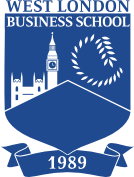Introduction to Computer Science
![3Informatika-300x149[1]](https://wlbs-online.com/wp-content/uploads/2019/05/3Informatika-300x1491.jpg)
Course Overview

The goal of the course Intoduction to Computer Science is to enable students within undergraduate academic studies for understanding and application of information technology and acquiring knowledge within the field.
Course overview
This course introduces computer science and informaton technology
Course Syllabus
This is a nine-week course with the following contents:
Week 1: Information Technology: Principles, Practices, and Opportunities
Describe the six characteristics of the Information Age and discuss the role of information technology as the principal tool of the Information Age. Explain the three primary components of information technology. Identify the six information-handling functions and the four benefits of information technology. Summarize the principles of business reengineering, while emphasizing the potential benefits to people and business. Discuss the types of opportunities that information technology offers to people. Describe the responsibilities of people who use information technology.
Week 2: Essentials of Computing
Identify the five components of a computer system. Explain the four categories of hardware and their functions. Discuss the relationship between hardware and software. Differentiate between an operating system and an application program. Identify 10 types of software packages. Explain the four components of information. Distinguish between the users of information technology and IT professionals. Describe the four types of procedures in computer systems. Explain the difference between single- and multi-user systems.
Week 3: Essentials of the Internet and World Wide Web
Explain how individual computers and server computers interact on the Internet. Describe the three types of capabilities of the Internet. Identify the 13 principal communication and retrieval capabilities of the Internet. Summarize how the Internet knows the location of a particular user. Describe how pages are used on the Web. Explain the purpose of hyperlinks and their role on the Web. Describe the characteristics of browser software and relate them to the types of information that can be included in a home page.
Week 4: The Central Processor and Memory
Describe the components and purpose of the central processing unit (CPU). Distinguish between primary storage (also called memory) and secondary storage (also called storage), and between RAM and ROM. Describe the chips and boards that can be used to augment the CPU and main memory. Explain the process by which computers use registers to process data. List and explain the four determinants of processor speed. Describe eight ways of increasing processing and computer speed.
Week 5: Storage and Input/Output Devices
Discuss why people and businesses use storage, not just the computer’s main memory, to store information. Distinguish between the two main types of magnetic storage, and identify three types of magnetic disk storage. Describe two alternatives for extending disk storage capacity in enterprises.Explain why optical storage is of growing importance in computing and describe the most commonly used forms of optical storage. Identify the seven most widely used input devices and describe how they are employed in computing. Discuss the future of voice input and audio output devices as components of IT. Describe the eight types of output devices and identify their uses in business.
Week 6: Personal and PC Databases
Explain why databases are widely used. Describe the main components of a database. List and describe five objectives of database management systems. Identify when a business should use a spreadsheet and when it should use a database. Identify the seven-step sequence for developing database applications.
Week 7: Enterprise Databases and Data Warehouses
Identify the reasons organizations choose to share databases and the functions of a database management system. Explain the difference between relational and object-oriented databases and their uses in business. Describe the differences between schemas, views, and indexes. Discuss the benefits of client/server computing. Differentiate between shared and distributed databases. Explain why enterprises establish data warehouses and how they differ from data marts and enterprise databases. Distinguish between a database administrator and a system programmer. Discuss database administration procedures and concurrency procedures and explain why these are an essential part of a shared database system.
Week 8: Enterprise and Personal Communications Networks
Identify the reasons that multiuser systems are used in business. Describe eight network service applications used in enterprises. Discuss the three types of communications networks and the advantages offered by each. Discuss the two types of communications channels used in networks and the ways that computers interconnect with them. Identify the five transport technologies that are in widespread use in physical channel networks. Describe the four forms of wireless communications. Explain the role of a network operating system. Discuss the activities involved in network administration. Explain the three types of enterprise architectures and the advantages offered by each.
Week 9: Electronic Commerce and Electronic Business
Describe the meaning of electronic commerce. Identify the two principal segments of electronic commerce. Describe the seven advantages that participants in electronic commerce enjoy compared to traditional commerce. Distinguish between the four business-to-consumer forms of electronic commerce. Discuss supply chain integration and the reason companies are making it an e-commerce objective. Identify the characteristics of electronic procurement. Explain the purpose of electronic exchanges and identify the three forms that have emerged.
Recommended Background
No technical knowledge required.
Suggested Readings
Information Technology: Principles, Practices, Opportunities, James A. Senn, Pearson
Course Format
The course consists of electronic documents and video demonstrations, with integrated quizzes that allow you to reinforce your knowledge of the material before moving on. Anytime, the candidate can consult online trainer for issues that he/she has.
TThe assessment for the course will comprise the weekly quizzes and peer assessment of selected topics. The principal purpose of the assessment is to provide feedback to you on a weekly basis, but it will also confirm that you have successfully completed the course.
During the course, candidates will use Windows 7 operating system and Microsoft Office 2010 application suite.
Certificates
Candidates who successfully complete the course will receive a West London Business School (WLBS) certificate of accomplishment
